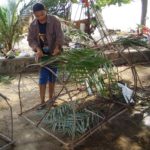Marbled octopuses like to hide in small caves at the seafloor. Fisherfolk use this behavior and offer artificial caves, which they populate. Even while retrieving, the octopuses will not leave their shelter and can be easily caught. Since ancient times, Noble volute conch shells have been used as artificial hiding places due to their easy availability and robustness. Before using these shells, however, they have to be prepared and optimized for the task, which will be described in the following article.

Which octopus species is targeted?
The primary target of this cephalopod trapping method is the Marbled octopuses (Amphioctopus aegina), which are also called ‘Sandbird octopuses’. This is a small-sized species, which occurs in coastal waters of the Indian Ocean and the North-West Pacific. Especially in the Gulf of Thailand and Southern China, this species is caught in large numbers due to its high protein content and lean meat. The Wikipedia description of this species can be found under this link.
How are Marbled octopuses caught?
Marbled octopuses are caught with a variety of artisanal fishing methods in their distribution area. One of these methods is spearing them at low tide, as described on my website.
The most important commercial fishing method for them, however, is to catch them on longlines within various types of encasings. These can either be earthenware pots, plastic pipes, bottles, or conch shells. The time-proven, traditional method of catching them within conch shells is called ‘Kungking’ (กุ๊งกิ๊ง) in the Thai language, mainly employed in the northern and central parts of the Gulf of Thailand.
Conch shells
As a hiding place for the Marbled octopuses, Noble volute (Cymbiola nobilis) conch shells are used. These gastropods are called ‘Hoi Juk Brahman’ (หอยจุกพราหมณ์) in Thai. Their slightly modified shells are large enough for the Marbled octopuses to feel comfortable. Noble volute conchs are abundantly available in the tidal zone of muddy beaches. And they are robust enough to withstand repeated rough handling by the fishermen as an octopus-catching pod. A description of these shells can be found under this link.
Changes to the shell for use as a fishing tool
After collection in the sea, the fisherfolk will remove and eat their tasty mollusk meat. Thereafter, they will bury the uncleaned shells about 30 cm deep in beach sand. Underground marine worms will clean out all remaining biological matter within the shells. After about two weeks, the cleaned shells will be dug up and dried in the sun. Thereafter, they will be prepared for their future task.
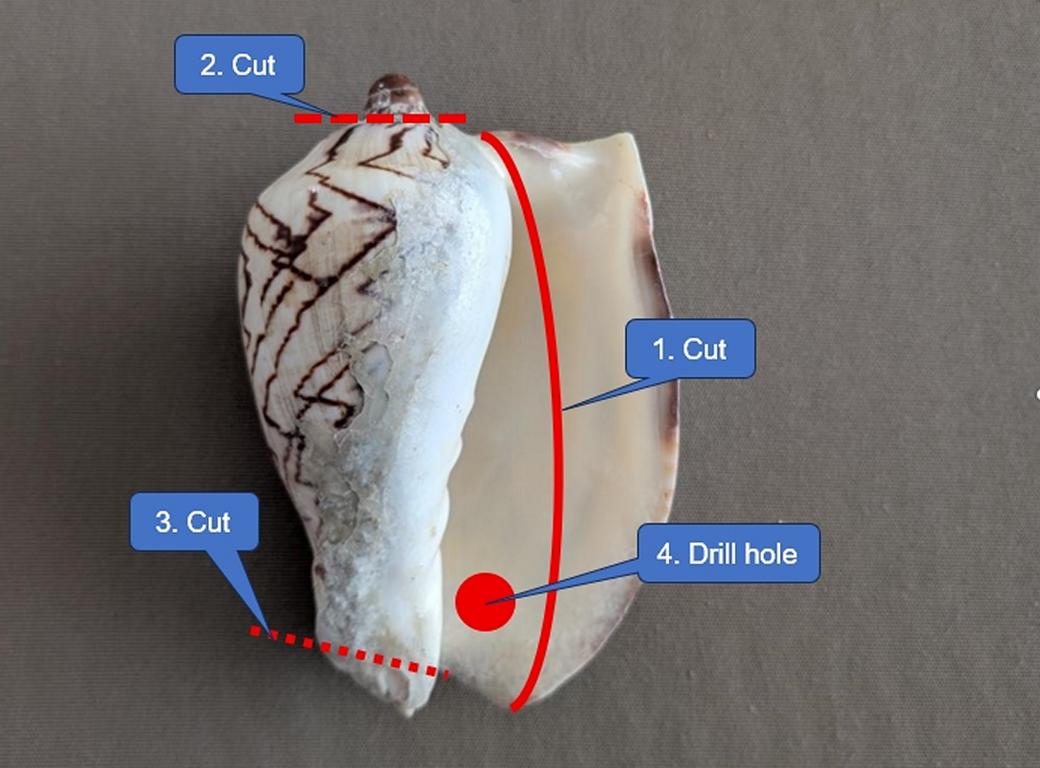
With an angle grinder, craftsmen in fishing villages will cut off the wide open lip of the shell (1st cut in the attached picture), and with a second and third cut, remove the protruding upper and lower ends. The 2nd cut serves to open up the interior of the shell slightly, so that water will flow out easily through the central opening. The 3rd cut removes the sharp lower end, which could lead to the handler’s injuries. And finally, a hole, dia. 10 mm / 0.4 inches, will be drilled for attaching the long line.
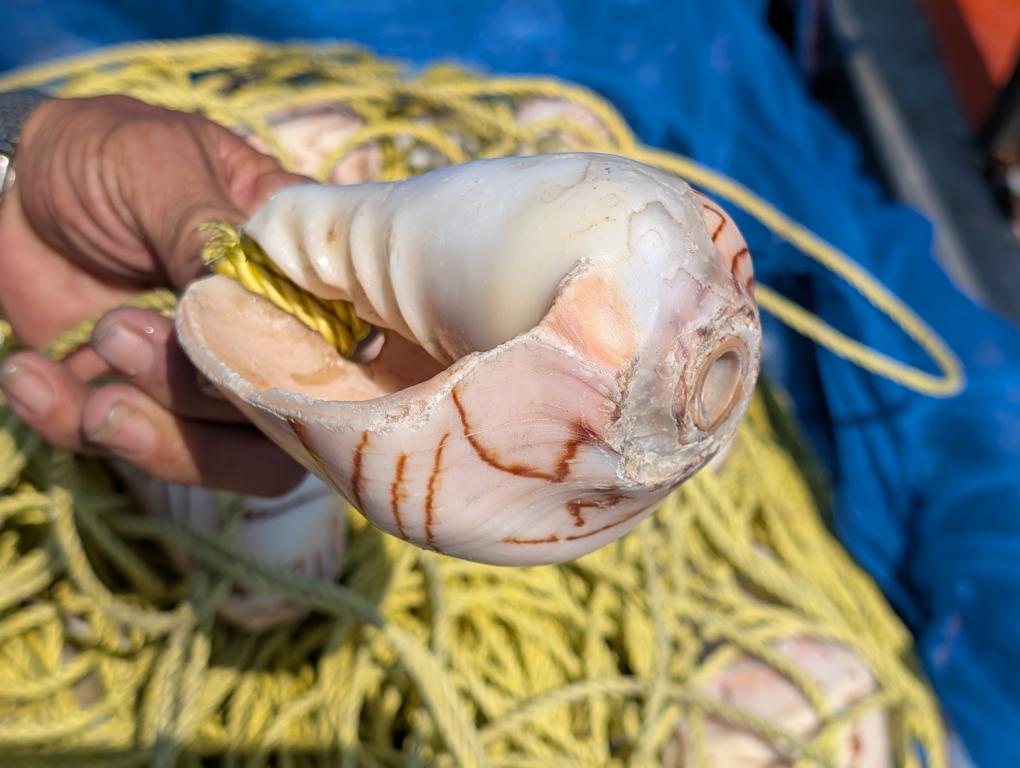
Thereafter, all sharp edges on the ventral side of the shell will be smoothed so that the octopus feels comfortable when entering. To hold the conch shell steadily in place while working, the craftsmen use a simple nail block as a vice.
Preparaing the trapline
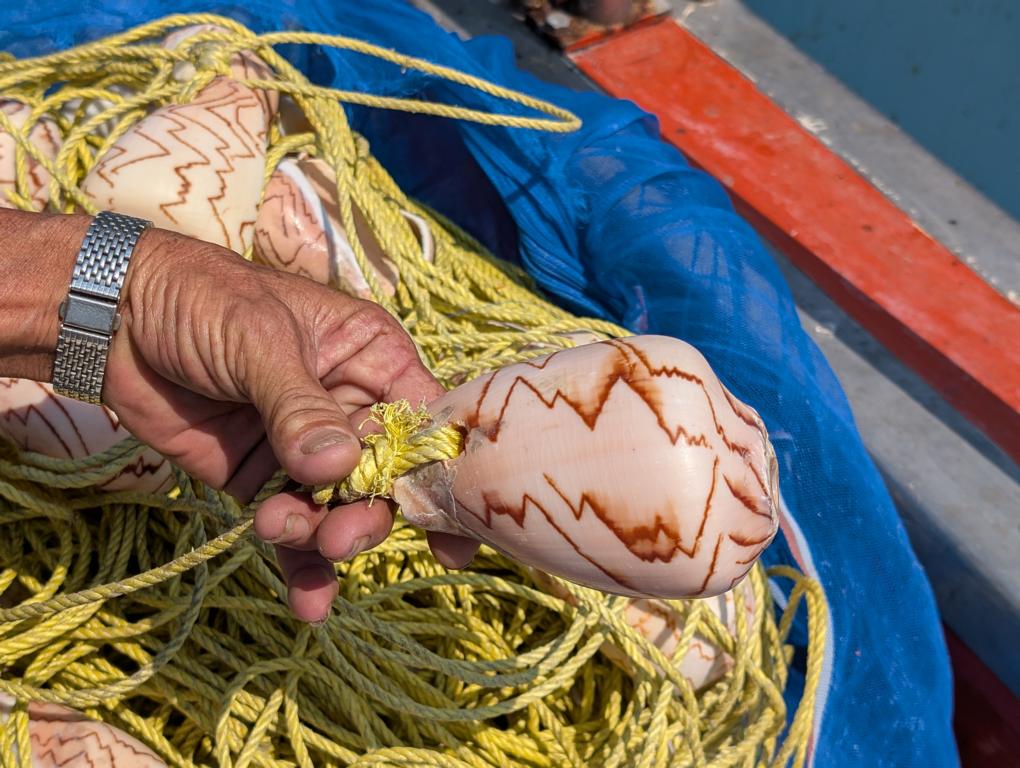
Yellow polypropylene ropes of 4 mm diameter will be used to connect the shells. Each shell is directly knotted into the long line, without the use of sidelines. Various types and combinations of hitches are used for this. To either remove or knot in a new shell without using the end of the line, a loop will be pulled through the hole in the shell and pulled over the shell itself. Often, this fastening will be secured with an additional hitch knot.
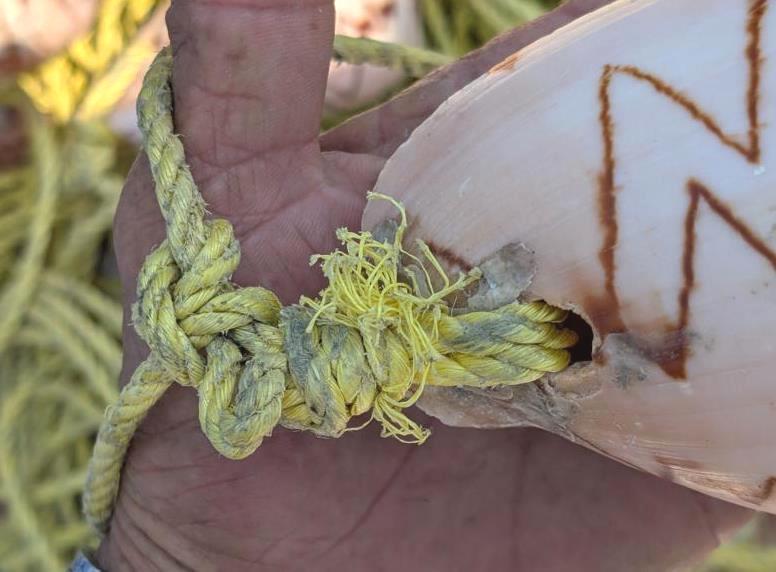
The distance between two shells on the longline is between 2.5 and 3 meters. In total, about 160 to 200 shells are knotted into one trapline, and the whole line will be packed into a net for storage and easy handling on the fishing boat or vessel.
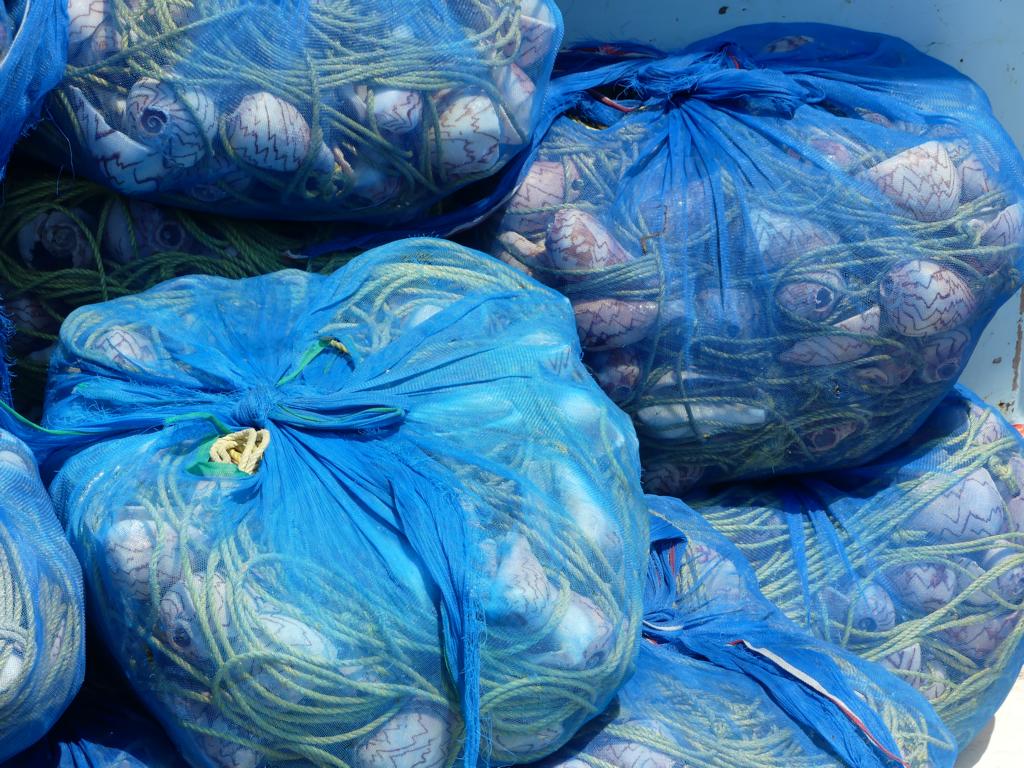
Conch shells for catching Marbled octopuses will attract barnacles, baby oysters, and other marine growth when in the water, and must be dried and cleaned regularly before using them again. According to a fisherman from near Cha-am, after 2 – 3 days in the water, the conch shells are getting infested with such growths and must be cleaned.
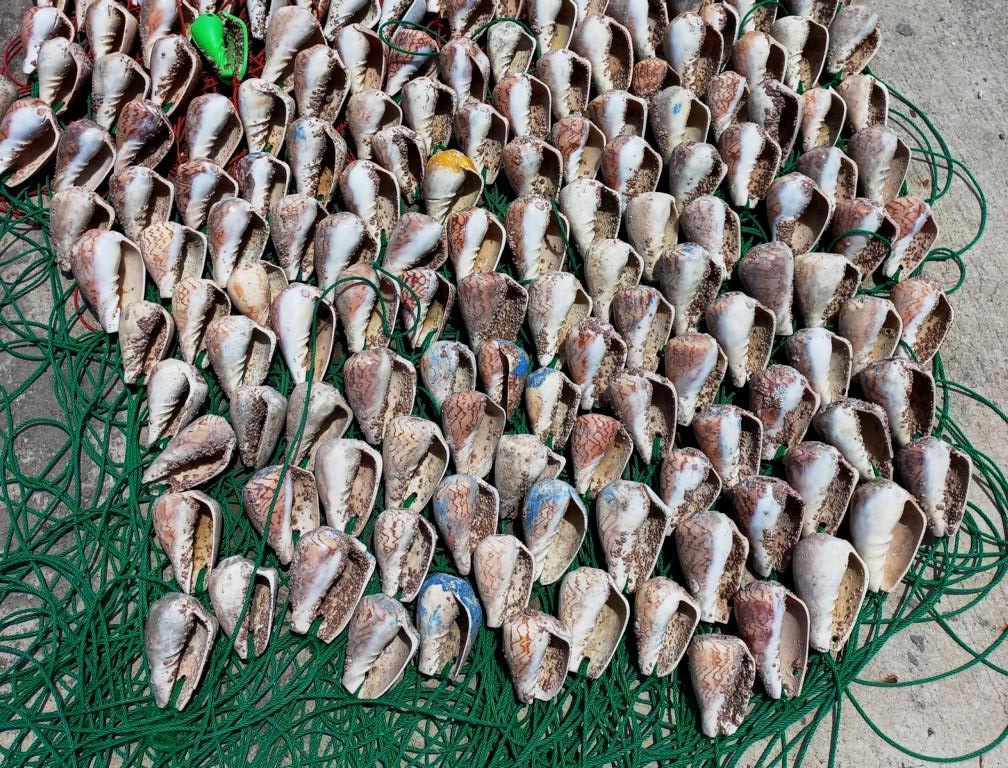
Lessons learned about preparing conch shells for catching Marbled octopuses:
- In the Gulf of Thailand, Noble volute conch shells were and are used for catching Marbled octopuses.
- To prepare these shells, the outer lip has to be trimmed back.
- Thereafter, both ends must be cut off slightly for easier drainage of water and smoother handling.
- A hole through the shell will accept the longline holding about 160 to 200 shells in total, with a distance between them of two to three meters.
The following article (https link) will describe the operation of these traplines for catching Marbled octopuses.
.



